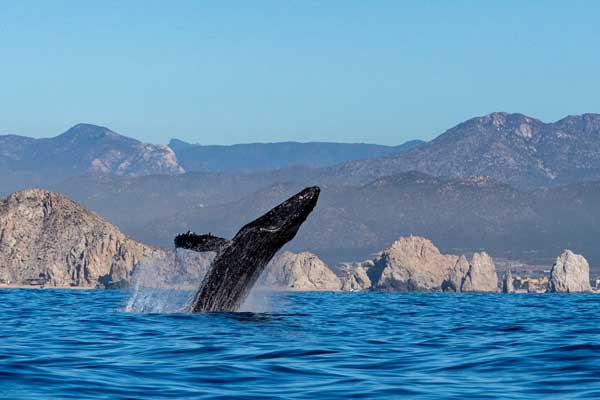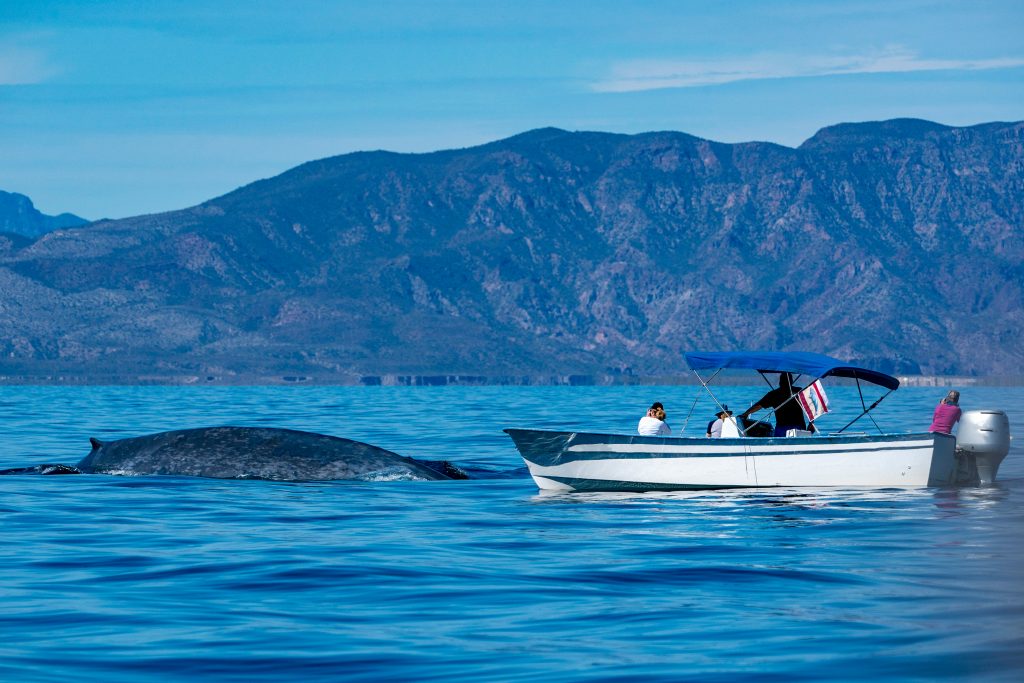Whale Watching in Baja California
Baja California, a natural paradise in the northwest of Mexico, is one of the most spectacular destinations in the world for whale watching. Each year, during the winter migration season (from December to April), the waters of the region fill with these majestic marine mammals, offering a unique opportunity to experience a combination of adventure, nature, and ecological awareness.
Whale watching in Baja California is one of the most thrilling and enriching experiences you can have in the natural world. During the migration season, gray whales, humpback whales, blue whales, and fin whales travel from the cold waters of the Arctic to the warm and protected coasts of Baja California, where they give birth and feed before returning north. Seeing these giant creatures in their natural habitat is undoubtedly an encounter that will leave a lasting impression on anyone who experiences it.

THE BEST PLACES TO EXPERIENCE IT
Bahía de Magdalena (San Carlos)
Located in Baja California Sur, this bay is a top spot for seeing gray whales up close, with opportunities for boat interactions. It’s also home to sea lions and seabirds.
El Vizcaíno (Biosphere Reserve)
A UNESCO site, El Vizcaíno features Laguna Ojo de Liebre, a key breeding ground for gray whales, offering intimate sightings in tranquil waters. Read More Here
Puerto Adolfo López Mateos (Baja California Sur Coast)
This small port offers boat tours where whales approach closely, showcasing dramatic behaviors like breaches and tail slaps, ideal for photography.
Gulf of California (Sea of Cortez)
The Sea of Cortez is home to gray and humpback whales, dolphins, sea turtles, and whale sharks, providing a rich and diverse whale-watching experience.
PLANNING YOUR TRIP: Essential Travel Tips
If you’re planning on driving to Baja California for this incredible whale-watching adventure, don’t forget to prepare your FMM (Tourist Visa / Forma Migratoria Múltiple) and car insurance before you hit the road.
FMM (Multiple Migratory Form): If you’re a foreign visitor entering Mexico by land, you will need to obtain an FMM. Read more about FMM HERE
Car Insurance: It is highly recommended and require by law to have Tourist Mexican Car Insurance when driving in Baja California. U.S. or Canadian car insurance policies do not cover you in Mexico, so you’ll need to purchase a temporary insurance policy that covers you while you’re in the country. Many insurance companies offer short-term plans that can be arranged at the border or online before you leave.
By taking care of these essential preparations in advance, you can enjoy a smooth and stress-free road trip to Baja California, ensuring that you’re ready to immerse yourself in the wonders of whale watching.
THE EXPERIENCE ONBOARD: WHAT TO EXPECT?
Whale watching in Baja California is a one-of-a-kind experience that combines excitement, beauty, and learning. Tourists typically embark on small boats (zodiacs or pangas), which allow for a more intimate and personal view of the whales without disturbing their natural behavior. Local guides, who are experts in marine life, provide valuable information about the species of whales in the area, their migration patterns, and their behaviors.
The typical whale watching tour includes:
- Spectacular Sightings: From the characteristic breaches of gray whales to the tail slaps of humpback whales, every interaction is an opportunity to marvel at these ocean giants.
- Educational Insights: Guides offer information about the importance of protecting the whales and their habitat. Whale conservation is critical, not only because of their size and majesty but also for the ecological balance they represent in the oceans.
- Photography Opportunities: Whale watching in Baja California is an excellent opportunity to capture breathtaking photographs. The close proximity of the whales to the boats often allows for magical moments to be immortalized in pictures.
CONSERVATION AND ENVIRONMENTAL RESPONSIBILITY
One of the most important aspects of whale watching in Baja California is the focus on conservation and protecting these species and their habitats. While gray whales are considered a species in recovery, many other species, such as humpback and blue whales, are protected by international and local laws to prevent overexploitation and damage to their environment. The tour operators in Baja California are committed to responsible practices, following strict codes of conduct that ensure whale watching does not stress or disturb the whales’ natural behaviors.

AN UNFORGETTABLE JOURNEY....
Whale watching in Baja California is more than just a tourist activity; it’s a transformative experience. The simple act of seeing these giant marine mammals up close—who migrate thousands of miles each year—creates a deep connection with nature and the ocean. For many, the experience goes beyond just observation; it prompts reflection on the importance of conservation and the impact of our actions on the environment.
If you’re looking for a unique and enriching experience, whale watching in Baja California is an activity you simply cannot miss. With the opportunity to see whales up close, learn about marine ecology, and enjoy the natural beauty of the region, this is a destination that should be on the bucket list of any nature lover and adventure seeker.
Baja California’s waters not only house whales but also a rich diversity of marine life and stunning landscapes that will leave you breathless. Embark on this incredible journey and witness the magic of meeting the giants of the sea!


